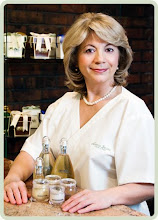Green Sugar Part 1: Are All Sweeteners Created Equal?
Physicians, diet experts, and beauty gurus agree: refined sugar is the enemy of graceful aging. If you want to stave off wrinkles, weight gain, fatigue, and age-related diseases, then start by replacing all those empty calories you consume with real nutrition.
A Sweet Life After “White Death”
While this anti-aging prescription might sound like a bitter pill to swallow, a spoonful of nutritional awareness—and a trip to your local Asian market or health food store—can make it a lot easier to take.
Today’s expanding green marketplace offers a number of naturally delicious plant-derived sweeteners that ancient holistic traditions and emerging scientific research suggest are not only far less toxic to our bodies than refined sugar, but even beneficial to our health.
The Beauty of Whole-Food Sugar
As for the old saw that sugar is sugar regardless of what you call it, there’s a good deal of evidence that throws that nutritional wisdom into question. Although the jury is still out on claims that honey, molasses, and their more exotic counterparts release energy into the bloodstream more gradually than refined sucrose and high-fructose corn, scientific research does suggest the effect of minimally processed sugars on blood glucose levels is balanced by their green bonuses.
Not only do the simple cooking methods used to produce these more complex sugars leave most of their nutritional content intact—heat derivation is a far safer than chemical extraction. Obviously, the phosphoric acid, sulfur dioxide, and bleaches used to manufacture those sparkling white granules and crystal-clear syrups are anything but pure and innocent.
Why Less Isn’t Always More
But what about no- or reduced-calorie sugar substitutes like aspartame? Confirmed waist-watchers who think artificial sweeteners are the best way to avoid empty calories should consider the other negatives of sugar’s synthetic cousins. From headaches and other side effects to increased risk of cancer and neurological damage, the numerous health hazards of nonnutritive sweeteners are hardly a positive alternative to white sugar’s potentially deadly effects.
And while these chemical concoctions only remind of us of sugar, the traditional Asian sweeteners I’ll discuss in my upcoming spots add a deep, rich flavor that may even surpass it.
Labels: anti-aging, daily and weekly skincare regimen, diet, holistic, natural skincare, organic skin care






